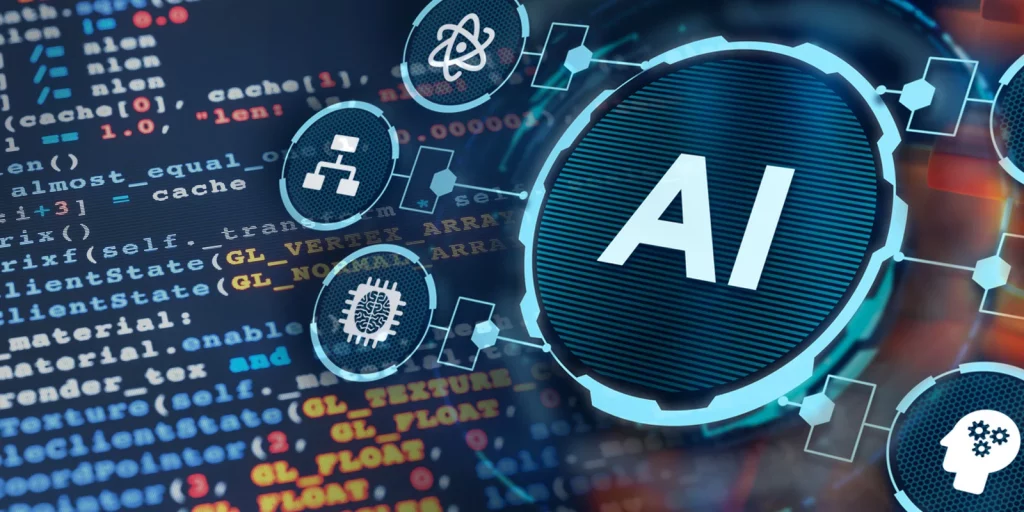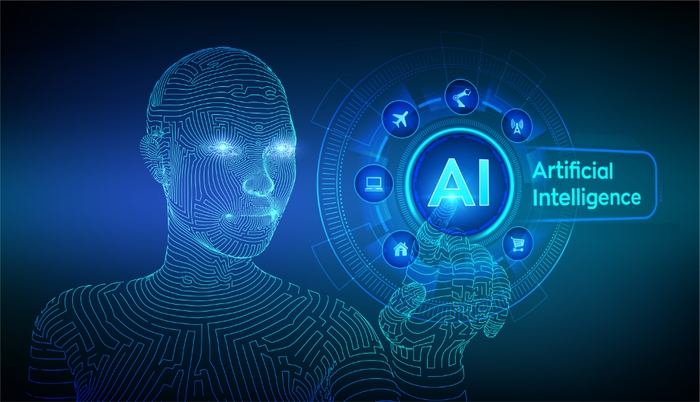Introduction
The convergence of two groundbreaking technologies—blockchain and artificial intelligence (AI)—holds the potential to redefine a wide range of industries, from healthcare and finance to logistics and cybersecurity. While both technologies are transformative on their own, when integrated, they complement each other in ways that can address existing challenges in areas such as security, transparency, data integrity, and automation. The fusion of blockchain’s decentralized, immutable ledger and AI’s data-driven decision-making capabilities could usher in a new era of technological innovation.
This article explores the emerging trends and innovations that could arise from the integration of blockchain and AI, the synergies between these two technologies, and the impact they will have on various sectors.
Section 1: Understanding Blockchain and AI
1.1 Blockchain: Decentralization, Transparency, and Security
Blockchain is a distributed ledger technology that records transactions across multiple computers in a way that ensures the data is secure, transparent, and immutable. It allows for decentralized control, meaning there is no central authority overseeing the data or transactions. Blockchain’s features include:
- Decentralization: No central control, making it harder for malicious actors to manipulate the system.
- Transparency: All transactions are recorded on a public ledger that can be accessed by any participant.
- Immutability: Once data is recorded, it cannot be altered or deleted, ensuring data integrity.
These attributes make blockchain an ideal candidate for applications requiring high levels of security, trust, and transparency, such as supply chains, financial transactions, and healthcare data management.
1.2 Artificial Intelligence: Automation and Decision-Making
AI refers to machines and systems that are capable of performing tasks that traditionally require human intelligence. These tasks include problem-solving, pattern recognition, learning from data, and making decisions. AI encompasses various subfields, such as:
- Machine Learning (ML): A subset of AI that involves algorithms capable of learning patterns and making predictions based on data.
- Natural Language Processing (NLP): The ability of AI systems to understand and interpret human language.
- Computer Vision: AI’s ability to interpret and make decisions based on visual data.
AI is already being used to automate processes, improve decision-making, and enable predictive analytics across industries like healthcare, finance, and customer service.
Section 2: Synergies Between Blockchain and AI
The integration of blockchain and AI creates synergies that address some of the inherent limitations of each technology when used separately. Blockchain provides AI with enhanced data security, transparency, and verifiability, while AI can optimize blockchain’s performance, making it more efficient and scalable.
2.1 Enhancing Data Security and Privacy
Blockchain’s decentralized nature ensures that sensitive data is not stored in a central repository, reducing the risk of data breaches and unauthorized access. This is especially important in AI applications, where large datasets are often required for training machine learning models.
- How Blockchain Helps AI: By storing AI training data and algorithms on a blockchain, it becomes possible to trace the origins of the data, verify its integrity, and ensure that the data used is not tampered with. Moreover, data privacy can be enhanced by encrypting sensitive data and giving users control over who has access to their information.
- Example: In the healthcare sector, AI can be used to predict patient outcomes, while blockchain ensures that the patient’s medical data is securely stored and cannot be altered, preserving its integrity.
2.2 Smart Contracts for AI-Driven Automation
AI and blockchain can work together to create smart contracts—self-executing contracts with the terms directly written into code. When AI algorithms are integrated into smart contracts, they can enable more autonomous, self-adaptive, and intelligent systems that can perform complex transactions without human intervention.
- How Blockchain and AI Enhance Smart Contracts: AI algorithms can automatically analyze data and make decisions based on predefined criteria. When integrated with blockchain, these decisions can trigger smart contracts, allowing for the automated execution of actions such as payments, asset transfers, or service provisioning.
- Example: In a supply chain scenario, AI-powered systems can predict demand, automatically trigger inventory replenishment orders, and execute payments via smart contracts—all without human oversight.
2.3 Decentralized AI and Data Marketplaces
Blockchain can enable decentralized AI models, allowing for more equitable and transparent access to AI models and data. Instead of relying on centralized organizations to collect and control vast amounts of data, blockchain can facilitate peer-to-peer exchanges where data and AI models are shared securely.
- How Blockchain and AI Facilitate Decentralization: Blockchain allows for the creation of decentralized data marketplaces, where users can monetize their data and AI models can be shared with greater transparency and fairness. AI can be used to facilitate the trading of data and algorithms, ensuring that parties are compensated based on the value of their contributions.
- Example: A decentralized marketplace for medical data could allow researchers to access datasets to train AI models while ensuring that data privacy and ownership are protected via blockchain.
2.4 AI-Enhanced Blockchain Networks
AI can be used to optimize and improve blockchain’s scalability and efficiency. Blockchain networks often struggle with issues like high transaction costs, slow processing times, and the energy consumption required for proof-of-work consensus mechanisms. AI can help optimize these processes by predicting network loads, detecting anomalies, and automating consensus protocols.
- How AI Optimizes Blockchain: Machine learning algorithms can be used to predict traffic patterns on a blockchain, optimize transaction routing, and minimize energy consumption. AI can also help in fraud detection and anomaly detection, identifying suspicious activities faster than traditional methods.
- Example: In cryptocurrency networks, AI can be employed to predict transaction fees and times, helping to optimize the process for users.
Section 3: Emerging Trends and Innovations from Blockchain-AI Integration
The integration of blockchain and AI is driving several emerging technological trends that could shape the future of industries ranging from finance to healthcare, logistics, and beyond.
3.1 Autonomous Decision-Making in Financial Systems
The combination of blockchain and AI will likely enable the creation of autonomous financial systems that can make real-time decisions based on AI algorithms and execute transactions on the blockchain. These systems can operate without human intervention, enhancing efficiency and reducing the risk of human error or bias.
- Trend: Decentralized finance (DeFi) platforms that use AI to manage investments and execute trades autonomously on blockchain platforms will become more common. These platforms will optimize financial decision-making by analyzing vast amounts of real-time data and predicting market trends.
3.2 AI-Powered Blockchain Consensus Mechanisms
Traditional blockchain networks often rely on proof-of-work (PoW) or proof-of-stake (PoS) mechanisms for transaction validation. These processes can be slow, energy-intensive, and prone to inefficiency. AI can enhance these consensus mechanisms by creating more adaptive and efficient ways to validate transactions, improving scalability and reducing the environmental impact of blockchain networks.
- Trend: Blockchain networks might adopt AI-driven consensus algorithms that can predict transaction validity, optimize block production, and reduce overall energy consumption, making blockchain more environmentally friendly.
3.3 Blockchain for Trustworthy AI Model Training
One of the challenges of AI development is ensuring that the training data used is both accurate and free from bias. Blockchain can help create audit trails for AI model training, ensuring the integrity and traceability of the datasets used.
- Trend: The use of blockchain in AI model training will ensure that models are trained on verified, high-quality data, reducing the risk of biased or flawed AI systems. This trend will be crucial in sectors like finance, where algorithmic decision-making must be transparent and trustworthy.
3.4 Blockchain-Enabled Explainability and Accountability in AI
AI decision-making can often be a “black box,” where even the developers themselves cannot always explain why the system made a certain decision. Blockchain’s transparent nature can provide a verifiable audit trail of AI decision-making processes, enhancing accountability and explainability.
- Trend: As AI systems become more integrated into industries like healthcare and finance, blockchain will play a role in ensuring that AI’s decision-making processes are transparent and auditable, helping to prevent biases and errors from affecting outcomes.

Section 4: Challenges to Blockchain-AI Integration
Despite the exciting potential of blockchain and AI convergence, several challenges remain:
4.1 Scalability and Efficiency
Both blockchain and AI systems require significant computational resources. Blockchain networks, especially those using PoW consensus, can be slow and energy-intensive, while AI models often require vast amounts of data and computational power to train. Finding a way to optimize both systems’ efficiency is a key challenge.
4.2 Regulatory and Legal Concerns
The integration of AI and blockchain may raise issues around data privacy, accountability, and ethics. Regulations regarding AI decision-making and blockchain transactions will need to evolve to ensure that both technologies are used responsibly and ethically.
4.3 Integration Complexity
Integrating AI and blockchain requires complex architecture and infrastructure. Building systems that allow both technologies to work together seamlessly will require significant investment in terms of time, resources, and expertise.
Conclusion
The fusion of blockchain and AI is set to trigger a wave of technological innovations that will redefine industries and create more secure, efficient, and transparent systems. From decentralized financial systems to autonomous decision-making in smart contracts, the combination of these technologies can help solve many of the current limitations facing each independently.
As blockchain enhances AI’s security and transparency and AI optimizes blockchain’s scalability and efficiency, this synergy is poised to drive the next wave of technological breakthroughs, making systems more autonomous, intelligent, and trusted across various sectors. However, overcoming challenges like scalability, regulatory concerns, and integration complexities will be key to unlocking the full potential of this convergence. The future holds great promise as the integration of blockchain and AI continues to evolve, enabling new levels of innovation and progress.
















































